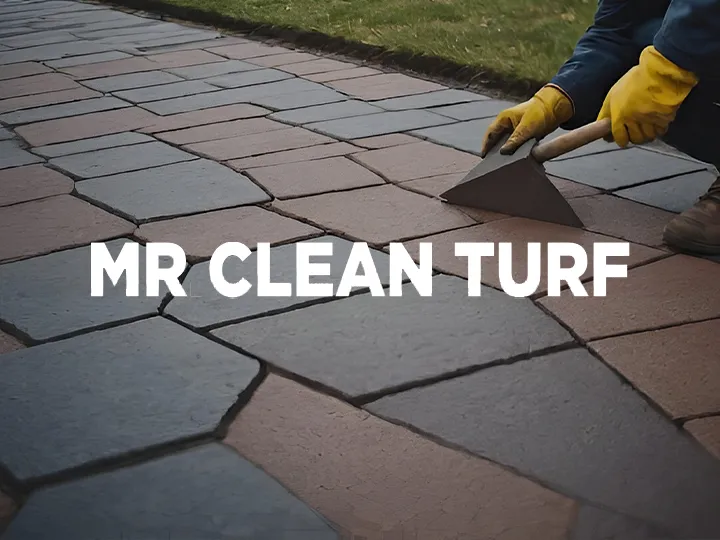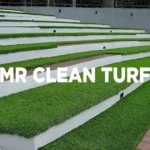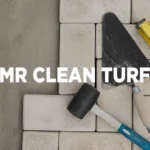How to Maintain and Protect Your Travertine Pavers for Years
Travertine pavers are widely used in outdoor applications because they combine an attractive appearance with lengthy endurance. The limestone stone composition of travertine creates visual appeal through natural shades and thin markings that work best for outdoor patio, pathway, and pool deck applications. Travertine stones must receive ongoing care to preserve their appearance at the same level as cobblestone pavers and bluestone pavers.
Because of its porous nature, this material draws in spills, causing staining, which combined with strong weather conditions, leads to degradation with time. The moisture resistance of rubber pavers and concrete pavers differs from travertine since this stone requires specialized cleaning products for maintenance. Combining regular protective sealant applications and minimally correct cleaning methods will help travertine pavers last for decades without appearing aged.
The timeless charm of travertine pavers surpasses the comparison to granite pavers or porcelain pavers, which justifies its slightly more challenging installation requirements.
Daily and Seasonal Care for Travertine Pavers
You must perform daily maintenance for travertine pavers combined with seasonal adjustments to protect them from natural damage. Steering clear of daily maintenance together with seasonal protection helps travertine pavers resist damaging effects from weather elements. These straightforward procedures will help maintain both the attractiveness and operational stability of your pavings across annual seasons.
Routine Cleaning Tips
Regular use of a soft-bristle broom should be performed weekly to clear dirt and debris from travertine pavers. A mixture of pH-neutral cleaner with water should be used for complete cleaning operations. Usage of both bleach and vinegar should be avoided since they create surface etching on materials. Travertine pavers need delicate maintenance because harsh chemicals will damage them even though they work well on rubber pavers and concrete pavers. Routine paver cleaning will stop the accumulation of dirt, which cuts down on appearance wear.
Seasonal Protection
Hazards such as de-icing salts should be avoided in winter since they cause travertine erosion. Instead, use sand for traction. Take necessary measures to direct rainwater away from developing puddles during seasonal wet periods. The permeable nature of travertine leaves it more susceptible than flagstone pavers and granite pavers to absorb moisture. Seasonal care methods provide external defense for your pavers against harsh weather elements, thus providing them with longer service times.
How to Seal Travertine Pavers
The maintenance of your travertine pavers significantly depends on implementing an appropriate seal. When applied correctly, the right sealer shields travertine pavers from liquid spills, surface water, and damaging UV rays and maintains their original stone appearance. When selecting the proper product alongside the correct application methods, it becomes possible to substantially increase the lifespan of your pavers and maintain their brand-new appearance.
Choosing a Sealer
A penetrating sealer that comes either in water-based or solvent-based form will shield travertine surfaces while maintaining their original aesthetic. Portugal marble requires periodic sealing from one to three times per year because it differs from impervious porcelain pavers. Different seals need to be selected per product label for bluestone and cobblestone pavers. When choosing a stone sealer, you can achieve the greatest stone protection together with extended stone life.
Applying the Sealer
- Make sure to remove all moisture from the pavers before proceeding.
- You should distribute the sealer throughout the surface with a sprayer or roller until it covers everything evenly.
- A dry period of 24–48 hours should occur before allowing use of the area.
The application of sealer creates a 90% decrease in water absorption along with total resistance to wine and oil stains. The correct sealer application method enables deep penetration, which delivers enduring defensive measures for the stone material.
Repairing Damaged Travertine Pavers
Travertine pavers face potential damage despite regular care because they may become damaged from excessive utilization or extreme climatic conditions. Acting immediately to fix chips along with addressing stains and cracks results in reduced expense because it minimizes deterioration. You should deal with pavers either yourself or with professional help to maintain their functionality and attractive appearance.
DIY Repairs
- You should stuff small chips with epoxy resin that matches the stone color.
- You can prepare a stain-lifting paste by mixing baking soda with water.
- Russian dolomite needs immediate replacement when its pavers develop severe cracks to make spaces that could lead to accidents.
The weakness of travertine stones requires gentle repairs, so you should avoid powerful adhesives when repairing granite pavers or concrete pavers. Low-cost handy work on small paver issues maintains their aesthetic appeal.
Professional Help
Professional help is needed when extensive damage exists. Travertine restoration expenses amount to only half to three-quarters of the cost needed to replace the pavers. Professionals possess the right equipment along with specialized skills, which let them perform extensive repairs to restore pavers to their pristine state.
Comparing Travertine to Other Paver Materials
Travertine pavers have distinctive characteristics that set them apart from other common paving materials, as explained in this concise comparison table:
Paver Material |
Pros |
Cons |
Best For |
| Travertine Pavers | Natural beauty, durable, timeless appeal | Porous, requires regular sealing | Patios, pool decks, walkways |
| Cobblestone Pavers | Extremely durable, classic look | Uneven surface, high joint maintenance | Driveways, historic settings |
| Bluestone Pavers | Less porous, unique color variations | The material fades easily and tends to be costly. | Outdoor pathways, garden edges |
| Rubber Pavers | Low-maintenance, slip-resistant, eco-friendly | Lacks natural elegance, less durable | These materials find primary use for surfaces constructed around play zones as well as gym floors and swimming pool edge areas. |
| Porcelain Pavers
Concrete Pavers |
Stain-resistant, wide range of designs
Affordable, versatile, easy to install |
Slippery when wet, higher cost
Prone to cracking, less aesthetic |
Modern patios, rooftop decks
Driveway pavers, walkways |
| Flagstone Pavers | Natural look, durable, slip-resistant | Uneven surface requires sealing | Garden paths, outdoor seating areas |
| Granite Pavers | Extremely strong, scratch-resistant | Expensive, limited color options | High-traffic areas, commercial spaces |
Travertine serves as a perfect solution because it maintains the delicate combination of attractive looks, structural reliability, and easy adaptability with proper care. Selecting the right outdoor choice between elegance and practicality helps to know these material distinctions.
Final Tips!
Caring for travertine pavers efficiently enables them to endure more than twenty years of service. Gentle cleaning combined with regular sealing and swift repairs should always be used, along with rubber pavers and granite pavers as comparison points. The stone surface needs protection from aggressive chemicals and rough cleaning tools, as these substances will harm it.
Seasonal maintenance involving winter salt protection and rainy-month drainage care extends the lifespan and appearance of your pavers. Putting in minimal time alongside small amounts of effort will help you experience the classic beauty of travertine tiles for extended periods.
Mr. Clean Turf provides expert services for maintaining travertine pavers that need your attention. We provide top-notch repair and sealing solutions that your pavers require, so contact them right away.



